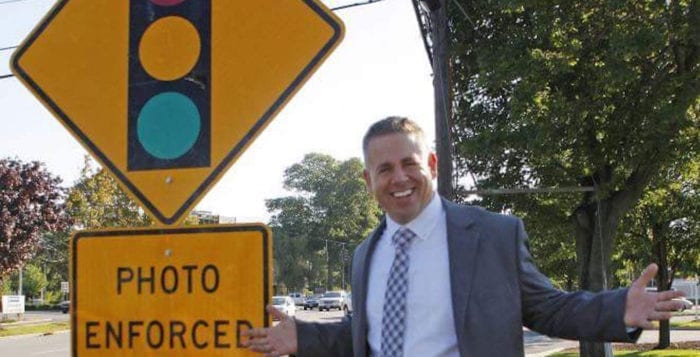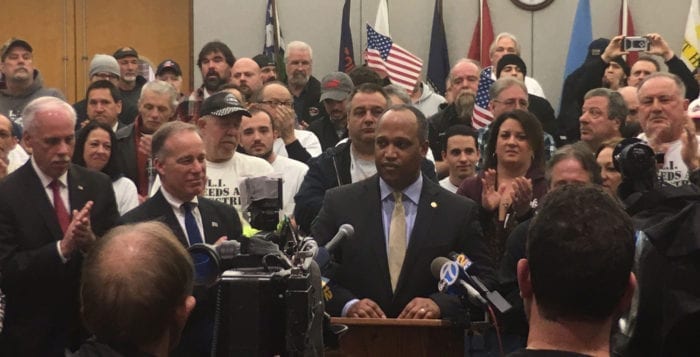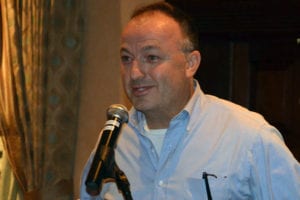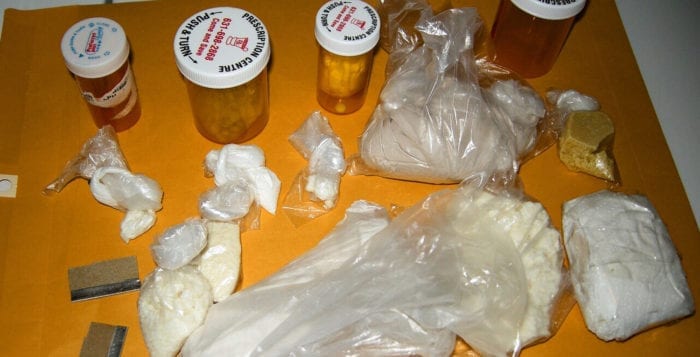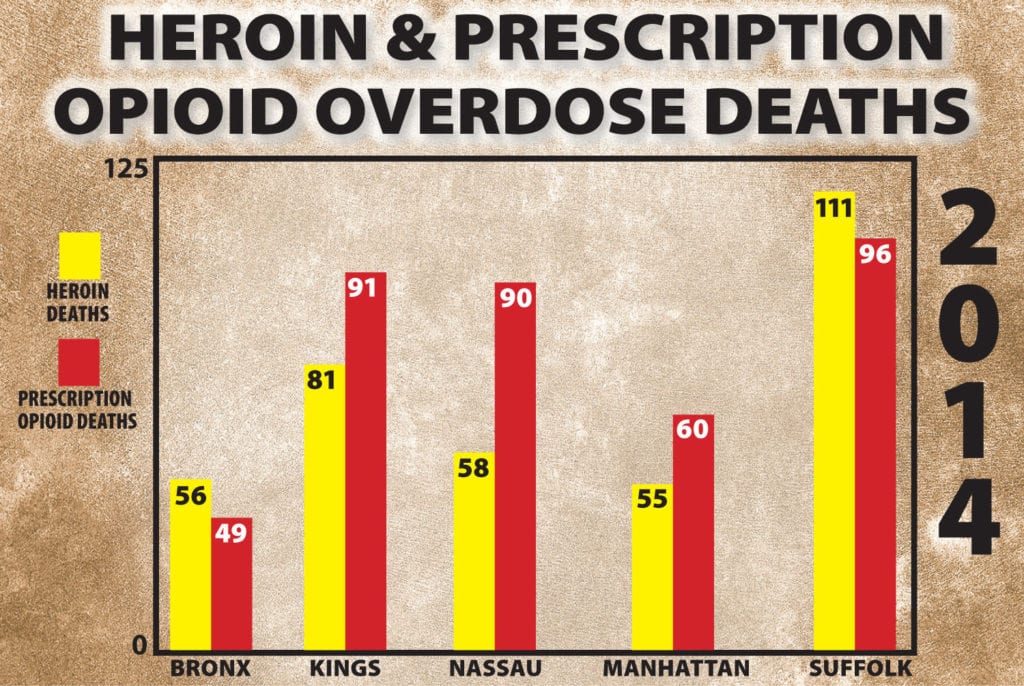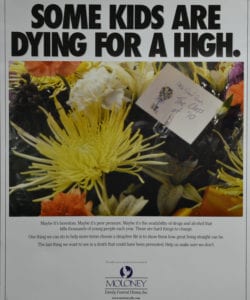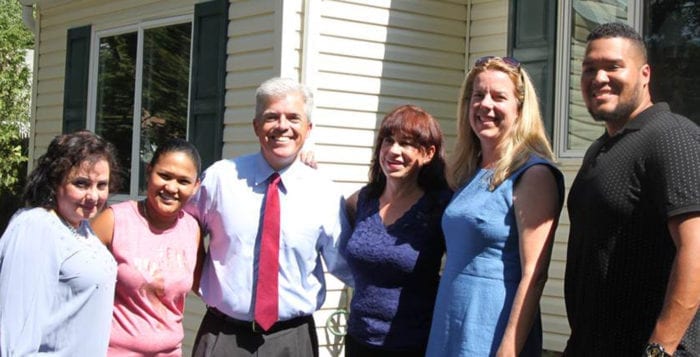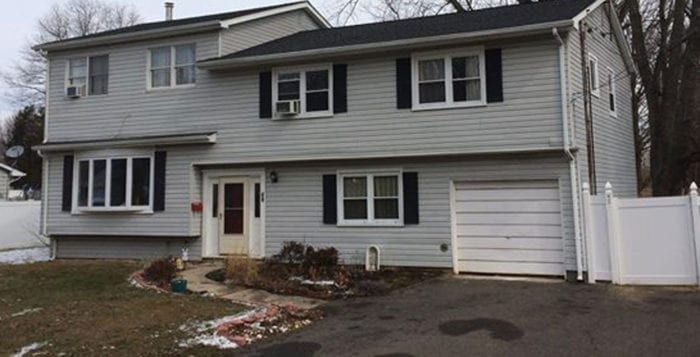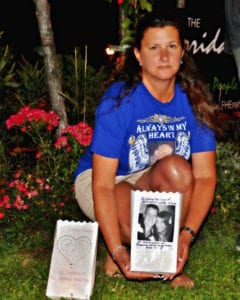The merry adventures of Suffolk County’s “Red Light Robin Hood” continued last week as the Centereach resident who took matters into his own hands by tampering with red light cameras across county intersections struck a plea deal with prosecutors. The agreement reached will place him on interim probation for one year in lieu of any prison time.
Stephen Ruth Jr., who has been crusading against the county’s red light camera program since 2015 in an effort to “take the power back” by exposing what he considers government corruption and helping save Suffolk resident’s lives — for which he’s been called a domestic hero on social media — pleaded guilty in Riverhead Feb. 8 to a felony charge of criminal mischief.
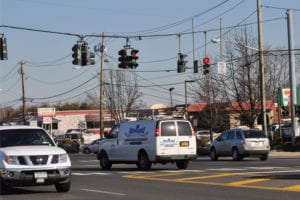
Since the county first installed red light cameras at busy intersections in 2010, which snap flashing photos of cars that run a red light or don’t come to a complete stop before turning right on red, they’ve been widely opposed across the county.
Ruth, who’s become the boastful face of the opposition — as evidenced by his smiley mug shot after first tampering with the devices in 2015 —has consistently called for the program’s repeal before the Suffolk County Legislature. He said the cameras and shortened yellow lights, “shortened to cause red light running for a profit,” are responsible for fatalities and accidents on the roads, have been illegally constructed without an engineer signing off on them, and are nothing more than a Suffolk County “money grab.”
“I was willing to go to jail from the beginning because I’m sticking up on behalf of those people who don’t have a voice anymore,” Ruth said. “These cameras are completely illegal and the [county] is not allowed to collect any money off them whatsoever … I knew this was going on and made my own news.”
Under the plea deal, Attorney David Raimondo said if Ruth successfully completes his probation, the felony plea will be dropped to a misdemeanor.
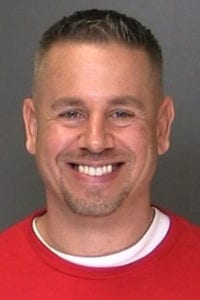
The 44-year-old real estate salesman may also have to pay up to $85,000 in restitution for all the cameras and equipment he’d left inoperable — a charge that will be challenged during a restitution hearing in April. Raimondo said he and his client will fight because “we believe that the entire red light camera system program is illegal and every single ticket issued from day one is a nullity.”
In the wake of the court ruling, Raimondo acknowledged that it was a good plea.
“This is something the county has to atone for and will atone for in civil litigation … it is not Stephen’s or his family’s cross to bear,” Raimondo said. “Why should Stephen sacrifice his personal freedom for what I think is nothing more than enterprise corruption?”
As Ruth has always worn his criminal tampering and obstruction of governmental administration as a badge of honor — even proudly demonstrating on his YouTube channel how he uses a painter’s extension rod to reach high-positioned red light cameras to turn its lens away from the road — Raimondo applauded his client for always taking responsibility for what he’s done.
“While I absolutely don’t condone or approve of any form of violence or destruction of property, I admire Stephen’s willingness to bring attention to the public the failures in the engineering behind the camera and how it’s affecting the taxpayers as a penalty and tax,” he said. “I [especially] admire that Stephen brought to the public’s attention the fact that the yellow light times have been shortened by the engineers because unfortunately people have been seriously injured and perhaps killed as a result.”

Ruth, in calling for a full investigation into the camera program to prove it’s an illegal operation, also wants to spotlight that the county continues to delete videos of any and all accidents that take place at intersections.
James Emanuel, a retired Suffolk County police officer, has dedicated himself to researching and testifying against the program, and is one of Ruth’s avid supporters.
“I’ve spoken to a lot of police officers who privately are a big fan of what he did,” Emanuel said. “You get to the point where you have to push back against the system; you just don’t have a choice. The guy saw a danger and his attitude was, ‘I’m gonna push back.’ He turned himself in every single time and he didn’t have to do that.”
In regards to Ruth’s plea deal, he said the county wants to prevent the program from being put on trial.
“There are thousands of infuriated people,” he said. “How would they find a jury of 12 people that wouldn’t find Stephen not guilty?”
Suffolk County Leg. Leslie Kennedy (R-Nesconset) said she understands Ruth’s strong feelings and acknowledges that red light cameras, although useful in some intersections, are overused and costly.
“I think what Ruth thought he was doing was making a statement, and he clearly did make a statement,” she said. “But you have to stay within the parameters of the law to make a statement that’s not going to get you in big trouble.”

